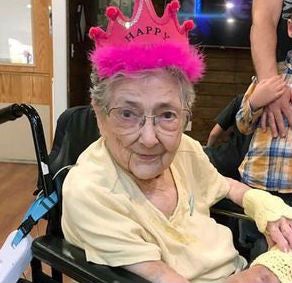Oregon woman lives to 99 with all her organs in the wrong place - without knowing it
'My mom would think this was so cool'

A woman from the Pacific NorthWest lived to the ripe old age of 99 - despite her organs all being located in the wrong place. What’s more, Rose Marie Bentley never knew anything was amiss.
When Ms Bentley died in 2017, her body was donated to research, as had been that of her husband, Jim, a dozen years earlier.
But when students from Oregon Health & Science University (OHSU) used the elderly lady’s cadaver to experiment with as part of a routine anatomy class, they discovered she was anything but normal. Indeed, they found she had suffered from the very rare condition of situs inversus.
This arrangement, present in just one in fifty million adults, leaves people with their liver, stomach and other abdominal organs transposed right to left. In Ms Bentley’s case, her heart remained on the left side of her chest.
“I knew something was up, but it took us a while to figure out how she was put together,” Cam Walker, an assistant professor of anatomy in the OHSU anatomical services centre, said in a statement released on Monday.
Warren Nielsen, a second-year medical student from Lake Oswego, Oregon, was one of many OHSU students who worked with Ms Bentley’s remains.
“It was quite amazing,” he said. “We were able to not only learn normal anatomy but also all the anatomic variation that can occur. I grew to appreciate how she was able to live as long as she did. It made me wonder who she was. The experience has me looking forward to caring for patients and being able to apply what I’ve learned from her.”
Ms Bentley and her husband had five children and ran a farm and pet supply store in the town of Molalla. She taught Sunday school and sang choir at their United Methodist Church,

According to reports, she and her husband decided to donate their remains for scientific research after reading a poem by Robert Test. It opens with the line: “Give my sight to the man who has never seen a sunrise, a baby’s face, or love in the eyes of a woman.”
Her children said she would have been laughed out loud to learn she was a medical rarity.
Louise Allee said her mother would love all the belated attention. “My mom would think this was so cool,” she said. “She would be tickled pink that she could teach something like this. She would probably get a big smile on her face, knowing that she was different, but made it through.”
Join our commenting forum
Join thought-provoking conversations, follow other Independent readers and see their replies
Comments
Bookmark popover
Removed from bookmarks